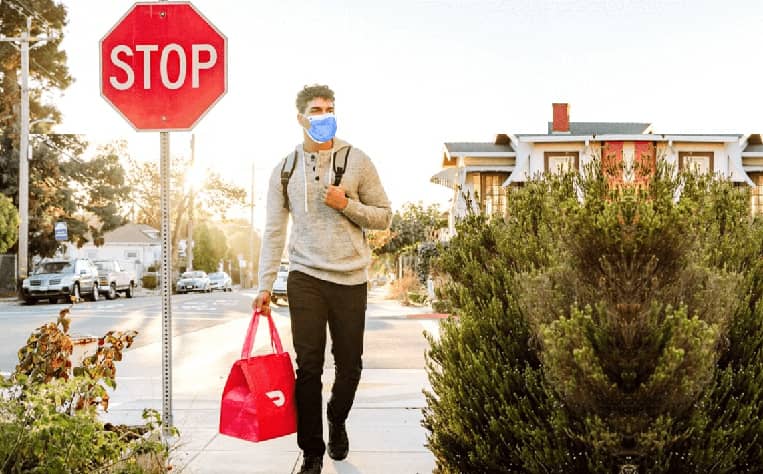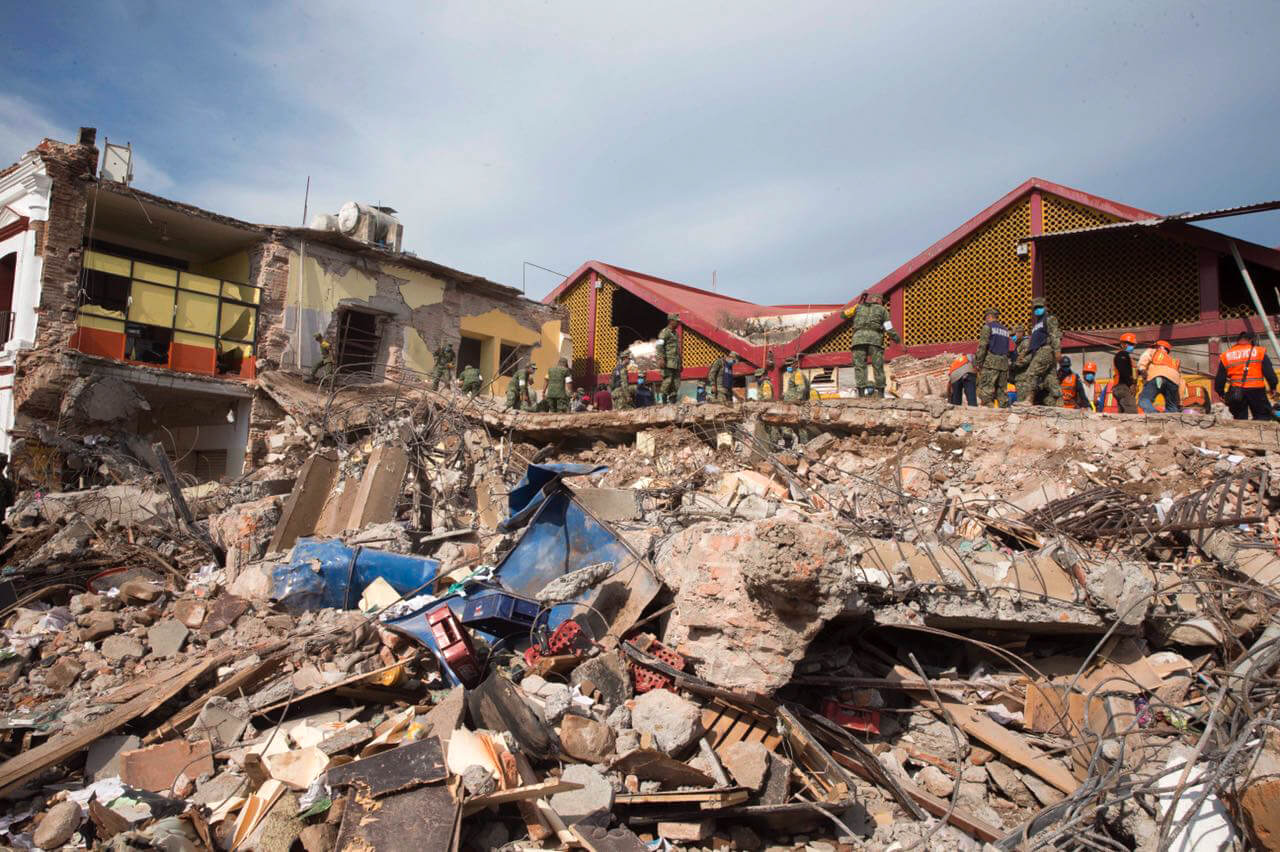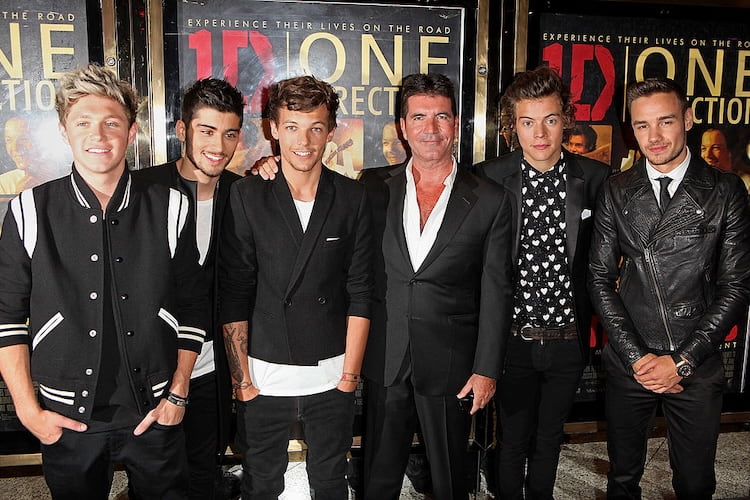Is It Safe To Order Food During The Coronavirus Pandemic?
 Shutterstock
Shutterstock Reading Time: 5 minutes
As the coronavirus pandemic continues, many restaurants have closed their dining rooms, and are only allowing takeout and delivery. You might be wondering whether it’s safe to order food while you’re social distancing.
Read on to find out what the experts have said about this, and what precautions you and the delivery service can take to ensure everyone is safe.
Is It Safe To Order Food During Coronavirus?
Some state and local governments have ordered bars and restaurants to be closed in order to prevent the spread of coronavirus. At the same time, some chain restaurants (such as McDonald’s and Taco Bell) have chosen to offer drive-thru, takeout, and delivery only.
To date, the information on COVID-19 from the World Health Organization (WHO) and the Centers for Disease Control and Prevention (CDC) doesn’t include any advisories about whether it’s safe or unsafe for people to order food delivery (or dine out, for that matter).
As we all spend more time at home, you might be wondering if it’s safe to take advantage of the delivery option. If you’re worried about the food itself, Delish reports that, according to the FDA, “there is no evidence to suggest that food produced in the United States can transmit COVID-19.”
RELATED: LIST OF ALL THE CELEBRITIES TESTED POSITIVE FOR CORONAVIRUS
As for the food’s packaging, epidemiologist Stephen Morse told The Atlantic, “There can be transmission through contaminated inanimate objects, but we think the most important route of transmission is respiratory droplets.”
According to Delish, ordering delivery to your home is safer than going into a restaurant, and it’s also safer for the recipient than it is for the delivery worker — who interacts with many more people as they do their job. But there are things you can do to make the experience even safer and more considerate.
DoorDash Provides Relief In Times of Coronavirus
In a statement to USA TODAY, DoorDash said, “This program will provide up to two weeks of (financial) assistance to Dashers and Caviar couriers who are diagnosed with COVID-19 or who are subject to quarantine at the direction of public health officials.”
“We have also begun distributing much-needed supplies to Dashers in affected areas, such as hand sanitizers, gloves and wipes.”
Couriers can also order these items free of cost, but they do have to cover shipping expenses.
Uber Eats Is Helping Local Business
The company is also providing financial assistance for up to 14 days to couriers and drivers who have been diagnosed with COVID-19 or have been asked to self-isolate. The assistance will be based “on your average daily earnings over the last six months,” the company explained in a blog post.
Uber also provided a list for the table below to show how their varying average daily earnings impact the amount of financial assistance they would receive:
| Average Daily Earnings over last 6 months* | Total Financial Assistance for up to 14 days |
| $28.57 / day | $400 |
| $64.28 / day | $900 |
| $121.42 / day | $1700 |
Uber Eats is also launching a dedicated marketing efforts to drive local business sales. They have also waived the delivery fee on all independent restaurants and a new feature that allows all restaurants to receive daily payouts, rather than the typical billing cycle, Uber Eats said in a statement to USA TODAY.
What To Do To Keep Your Delivery Experience Safe?
You can start by washing your hands before you receive your delivery food, and again before you eat. Many delivery services have also introduced a contactless delivery option, in which the delivery worker will leave the food outside for you.
Also, remember to tip your delivery person well. According to The Verge, 20 percent is the standard, but you might want to consider giving more, especially if it’s a big order. Electronic tipping is the safest option, but if you have to use cash, wash your hands after handling it.
RELATED: CARDI B’S CORONAVIRUS SONG IS CONTAGIOUS AND TOPPING THE CHARTS RIGHT NOW
According to the Huffington Post, it’s also important to only order from restaurants you’re familiar with and trust. “Is this is a place you’ve gone to before and you know what you’re getting yourself into, as opposed to going into a facility that you know nothing about?” food safety expert Jeff Nelken said.
Delivery Is Better Than Dining In
Food delivery services reduce opportunities for respiratory exposure. When you go to a restaurant, you have contact with a lot of humans and at this moment, our fellow human is the things we need to avoid. Waiting in lines for tables, sitting at tables, being served at tables and meeting people to eat food are all discouraged. By exposing yourself to people, you are increasing your exposure to viruses that may be carried by others and could make YOU sick. So take it as a public service announcement and DON’T eat out.
Is Food Delivery is Safe and Should be Used During Coronavirus?
Although food delivery doesn’t typically come with all of those routes for coronavirus exposure that eating out does, you can never be too sure.
The person delivering the food needs to follow safe hygiene practices and be in good health and since coronavirus sometimes takes 14 days to show symptoms, somebody could be sick and not even know it. Or worse, with a possible financial crisis looming and serves being hit the worse, somebody could very well be aware they are sick and still be delivering food or working in the kitchen.
The good news?
As per Health, when it comes to the preparation of the food, there’s no evidence that coronavirus can be transmitted by food.
Once again, the CDC has reiterated, coronavirus spreads through droplets, from a cough or sneeze to someone else’s nose or eyes. So while ordering might help a local restaurant, we are not sure how much it will help curb coronavirus. The safest way to avoid coronavirus? Cook at home. No genius advice there.















Greetings! I found this blog post to be incredibly informative and well-written. Your ability to break down complex topics into easy-to-understand language is truly a gift. Thank you for sharing your knowledge with us. I’m excited to read more of your posts in the future!